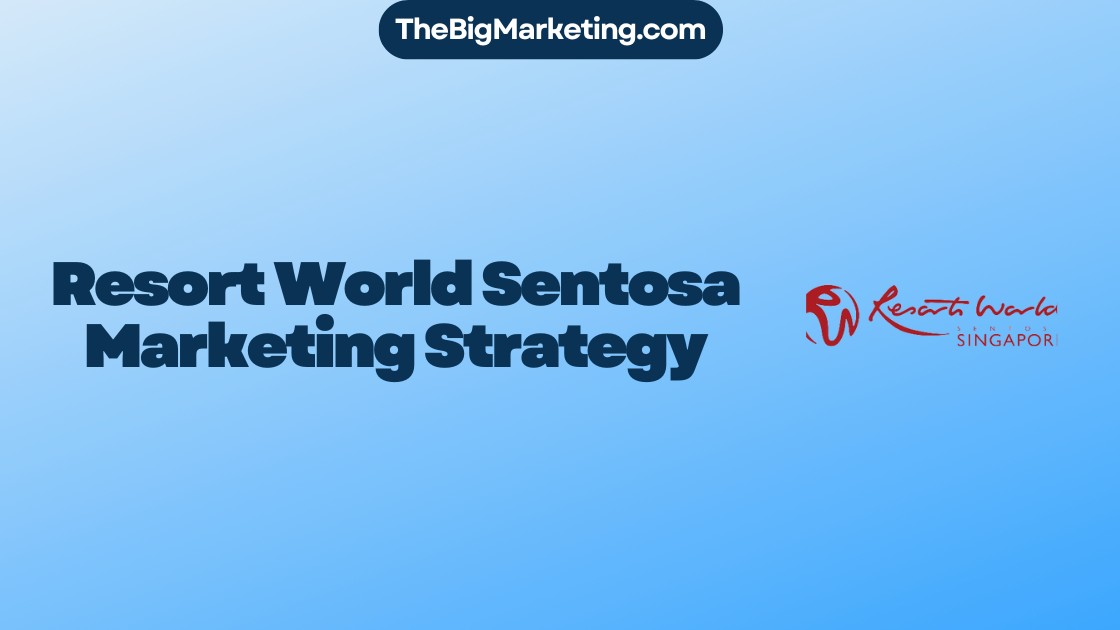Welcome to our case study on ONGC’s marketing strategy for 2024. As the largest crude oil and natural gas company in India, ONGC plays a crucial role in the country’s domestic production, contributing around 71% to it. With its subsidiaries, ONGC Videsh and ONGC Sports, the company extends its reach to exploration and extraction in the foreign sector and sponsorship of various sports teams.
ONGC’s position as the second-largest public sector unit in India enables it to implement a robust marketing strategy. In this case study, we will explore the company’s digital marketing approach, branding tactics, market positioning plan, promotional strategies, advertising campaigns, customer engagement techniques, market research insights, and competitive analysis findings.
Key Takeaways:
- ONGC is the largest crude oil and natural gas company in India, contributing around 71% to the country’s domestic production.
- The company has subsidiaries like ONGC Videsh and ONGC Sports, expanding its operations in the foreign sector and supporting sports teams.
- ONGC’s marketing strategy for 2024 encompasses digital marketing, branding, market positioning, promotions, advertising, customer engagement, market research, and competitive analysis.
- Through a comprehensive marketing mix, ONGC aims to meet India’s energy needs and maintain its market leadership.
- ONGC emphasizes sustainability, corporate social responsibility, and positive brand reputation through its marketing efforts.
About ONGC
ONGC, or Oil and Natural Gas Corporation, is the largest crude oil and natural gas company in India. With its subsidiaries like ONGC Videsh and ONGC Sports, ONGC holds a significant position in the oil and gas industry.
ONGC contributes approximately 71% to Indian domestic production, making it a key player in meeting the country’s energy needs. ONGC Videsh, the exploration and extraction subsidiary, operates in the foreign sector, expanding the company’s reach beyond Indian borders. On the other hand, ONGC Sports owns and sponsors various sports teams, showcasing its commitment to sports and community engagement.
What sets ONGC apart is its unique in-house service capabilities and a dedicated team of professionals. ONGC’s expertise in the oil and gas sector and its commitment to excellence have solidified its position as a leading force in the industry.
ONGC Subsidiaries
ONGC has two significant subsidiaries:
| Subsidiary | Description |
|---|---|
| ONGC Videsh | Handles exploration and extraction in the foreign sector |
| ONGC Sports | Owns and sponsors various sports teams |
Marketing Mix of ONGC
The marketing mix of a company plays a pivotal role in promoting its products in the market. ONGC’s marketing mix encompasses key strategies across product, pricing, place, and promotion. Let’s explore each element in detail:
Product Strategy
ONGC deals in a diverse range of oil and gas products, including crude oil, natural gas, and liquefied petroleum gas (LPG), among others. Its robust product portfolio ensures a steady supply of energy resources to meet consumer demands.
Pricing Strategy
ONGC employs a comprehensive pricing strategy considering international crude oil prices and government policies. This allows the company to set competitive prices for its products, ensuring affordability for consumers while maintaining profitability.
Place Strategy
ONGC adopts a hierarchical distribution model, selling its products through a network of intermediaries and partners. This multi-tiered approach enables efficient reach to the final consumer, ensuring widespread availability of ONGC’s energy resources.
Promotion Strategy
Promoting its products primarily through print media, ONGC leverages various advertising channels to create awareness and generate demand. The company also emphasizes sustainability and corporate social responsibility through its promotional activities.
| Marketing Mix Key Elements | Description |
|---|---|
| Product Strategy | ONGC deals in various oil and gas products, ensuring a diverse portfolio to meet consumer energy needs. |
| Pricing Strategy | ONGC sets competitive prices by considering international crude oil prices and government policies. |
| Place Strategy | ONGC employs a hierarchical distribution model, utilizing intermediaries and partners to reach the final consumer effectively. |
| Promotion Strategy | ONGC promotes its products primarily through print media and emphasizes sustainability and corporate social responsibility in its promotional activities. |
By incorporating these strategies into its marketing mix, ONGC maximizes its market presence and meets the energy demands of consumers effectively.
Product Strategy of ONGC
ONGC is at the forefront of the production, development, and exploration of oil and gas in India. With a diverse product mix that includes crude oil, natural gas, liquefied petroleum gas (LPG), naphtha, and other by-products, ONGC plays a vital role in fulfilling India’s energy needs.
ONGC is responsible for producing an impressive 77% of India’s crude oil and 62% of its natural gas. The company’s commitment to meeting the country’s demand for oil and gas is unmatched.
Crude oil, one of ONGC’s primary products, is sold to refiners who further process it into a wide range of petroleum products for domestic consumption. The production and sale of these petroleum products contribute significantly to India’s energy infrastructure and overall economic growth.
Furthermore, ONGC’s natural gas extraction process involves processing the excavated natural gas to extract valuable hydrocarbons including Methane, Butane, Propane, Ethane, and more. This processed natural gas becomes a crucial energy resource that fuels industries and households across the country.
ONGC’s commitment to product diversity and excellence reinforces its position as a leader in the oil and gas industry. By providing a wide range of essential energy products, the company remains at the forefront of meeting India’s growing energy demands.
Pricing Strategy of ONGC
ONGC, amidst tough competition in the oil market, employs a pricing strategy aimed at maintaining a fixed profit margin through controlled production. The pricing of crude oil is intricately tied to international prices, a crucial factor considering India’s heavy reliance on imported oil. In the case of natural gas, ONGC sets a reasonable rate, taking into account government policies that promote eco-friendly fuels. To ensure affordability for consumers, other petroleum products like LPG and kerosene are offered at subsidized prices. ONGC continually endeavors to strike a balance between reasonable pricing and contributing to the betterment of the country and its people.
| Product | Pricing Factors | |
|---|---|---|
| Crude Oil | Exploration and production | International crude oil prices, government policies |
| Refining and distribution | Market demand, processing costs, competitive landscape | |
| Natural Gas | Exploration and production | Government policies, environmental sustainability |
| Processing and distribution | Market demand, transportation costs, regulatory framework | |
| LPG, Kerosene, and other petroleum products | Subsidized pricing as per government policies | Ensuring affordability for consumers |
Place Strategy of ONGC
ONGC follows a strategic place strategy in its distribution channels to ensure efficient and effective delivery of its products to the market. The company utilizes a hierarchical distribution model, where it does not directly sell its products to the final consumer. Instead, ONGC employs a network of intermediaries and partners to reach its target audience.
The distribution of natural gas, one of ONGC’s key products, is done through bulk marketing channels and regional gas pipelines. This allows ONGC to reach a wider market and serve various industries and sectors. The distribution process is carefully regulated, with strict policies governed by the government to maintain safety and compliance standards.
Additionally, ONGC has formed strategic partnerships with other companies, including GAIL, IOCL, and MRPL, to distribute gasoline, diesel, and jet fuel. These collaborations enable ONGC to leverage the expertise and resources of its partners, ensuring a seamless flow of products to consumers.
ONGC has also expanded its operations internationally through its subsidiary, ONGC Videsh. This has allowed the company to explore new markets and establish its presence in countries such as Myanmar, Brazil, Venezuela, Syria, Nigeria, and more.
| Benefits of ONGC’s Place Strategy | Partner Companies for Distribution |
|---|---|
|
|
The place strategy of ONGC plays a crucial role in its overall marketing approach. By leveraging its distribution channels, regional gas pipelines, partnerships, and international operations, ONGC ensures that its products are readily available to meet the energy needs of various industries and consumers.
Promotion Strategy of ONGC
ONGC, the largest crude oil and natural gas company in India, employs a comprehensive promotion strategy to raise awareness and drive positive change. While print media remains one of their primary advertising channels, ONGC also leverages television and billboards to reach a wider audience.
As a responsible corporate entity, ONGC places a strong emphasis on sustainability and corporate social responsibility. The company actively works towards reducing its carbon footprint, minimizing methane emissions, and ensuring sustainable water management. Environmental protection is a top priority for ONGC, along with providing safe and healthy working conditions for its staff.
ONGC’s promotional campaigns go beyond product promotion; they strive to create awareness about important social and environmental issues. By engaging in various initiatives and campaigns, ONGC aims to drive positive change and contribute to the betterment of society.
| Promotion Strategy Elements | Description |
|---|---|
| Print Media | ONGC extensively utilizes print media, featuring advertisements in national and regional newspapers. This approach allows them to reach a wide range of audiences effectively. |
| Television | ONGC utilizes television advertising to extend its reach and engage with a broader demographic. Through targeted placements, they maximize the impact of their promotional messages. |
| Billboards | While less frequent than other channels, billboards are strategically employed by ONGC to create visual impact and raise brand visibility in key locations. |
| Sustainability and CSR | ONGC’s promotion strategy aligns with their commitment to sustainability and corporate social responsibility. Their campaigns emphasize environmental protection and drive positive change in society. |
Marketing Strategy of ONGC
ONGC (Oil and Natural Gas Corporation) employs a comprehensive marketing strategy that encompasses segmentation, targeting, and positioning (STP). By understanding the diverse needs of both corporate clients and individual consumers, ONGC effectively targets those looking to fulfill their energy requirements. As the largest crude oil and natural gas company in India, ONGC leverages its strong market presence and recognition to position itself as the future of India’s energy sector.
To support its market positioning, ONGC has implemented various marketing campaigns. These initiatives include the Right to Education Campaign, which focuses on promoting access to education for underprivileged children, the Stop Using Plastic Campaign to raise awareness about environmental sustainability, and the Covid-19 Safety Measures Campaign that emphasizes public health and safety during the pandemic.
ONGC continually strives to communicate effectively with its target audience. Through its marketing efforts, the company aims to highlight its commitment to sustainable practices, corporate social responsibility, and the welfare of society at large. ONGC recognizes the importance of continually improving its marketing strategies to stay relevant and competitive in the ever-evolving energy industry.
Conclusion
ONGC’s marketing strategy has been instrumental in its success within the oil and gas industry. By employing a well-planned marketing mix, encompassing product strategy, pricing strategy, place strategy, and promotion strategy, ONGC has firmly established itself as a market leader. The company’s commitment to sustainability and corporate social responsibility has further enhanced its brand reputation. ONGC’s marketing strategy has had a significant impact on the market, enabling it to fulfill India’s energy requirements and drive industry growth.
This case study serves as evidence of the effectiveness of ONGC’s marketing strategy and its influence on the industry at large. Through strategic marketing campaigns and initiatives, ONGC has successfully positioned itself as a future-oriented energy company and earned the trust of both corporate and individual customers. The company’s dedication to environmental protection and community welfare has not only contributed to its market impact but also served as a source of positive change.
In conclusion, ONGC’s marketing strategy has played a vital role in its overall success and the delivery of oil and gas solutions to meet India’s energy demands. By consistently implementing a comprehensive marketing mix and focusing on sustainability, ONGC has solidified its position as a leader in the industry. The case study highlights the effectiveness of ONGC’s marketing strategy and reaffirms its significant impact on the market.







